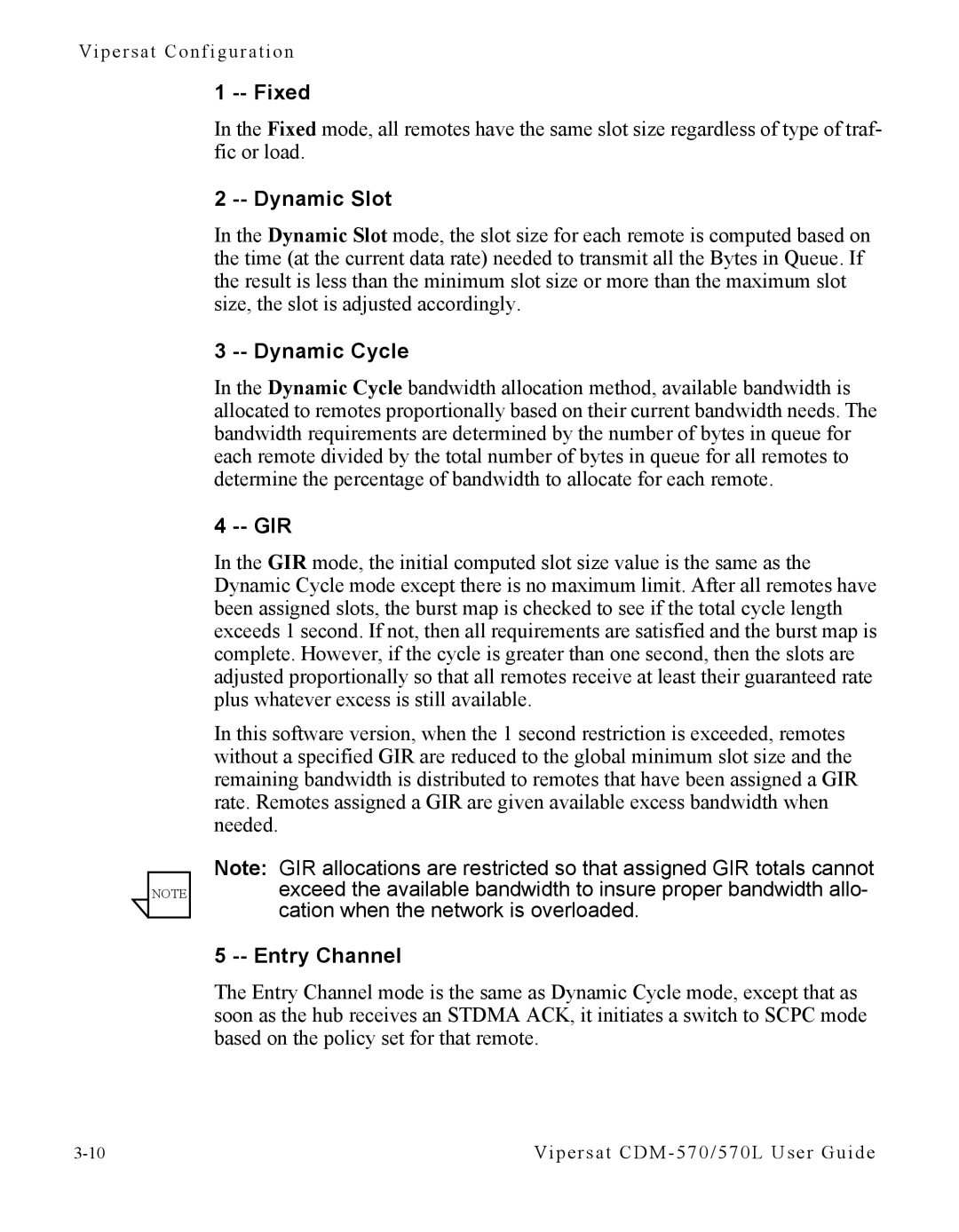Vipersat Configuration
NOTE
1 -- Fixed
In the Fixed mode, all remotes have the same slot size regardless of type of traf- fic or load.
2 -- Dynamic Slot
In the Dynamic Slot mode, the slot size for each remote is computed based on the time (at the current data rate) needed to transmit all the Bytes in Queue. If the result is less than the minimum slot size or more than the maximum slot size, the slot is adjusted accordingly.
3 -- Dynamic Cycle
In the Dynamic Cycle bandwidth allocation method, available bandwidth is allocated to remotes proportionally based on their current bandwidth needs. The bandwidth requirements are determined by the number of bytes in queue for each remote divided by the total number of bytes in queue for all remotes to determine the percentage of bandwidth to allocate for each remote.
4 -- GIR
In the GIR mode, the initial computed slot size value is the same as the Dynamic Cycle mode except there is no maximum limit. After all remotes have been assigned slots, the burst map is checked to see if the total cycle length exceeds 1 second. If not, then all requirements are satisfied and the burst map is complete. However, if the cycle is greater than one second, then the slots are adjusted proportionally so that all remotes receive at least their guaranteed rate plus whatever excess is still available.
In this software version, when the 1 second restriction is exceeded, remotes without a specified GIR are reduced to the global minimum slot size and the remaining bandwidth is distributed to remotes that have been assigned a GIR rate. Remotes assigned a GIR are given available excess bandwidth when needed.
Note: GIR allocations are restricted so that assigned GIR totals cannot exceed the available bandwidth to insure proper bandwidth allo- cation when the network is overloaded.
5 -- Entry Channel
The Entry Channel mode is the same as Dynamic Cycle mode, except that as soon as the hub receives an STDMA ACK, it initiates a switch to SCPC mode based on the policy set for that remote.
Vipersat |
